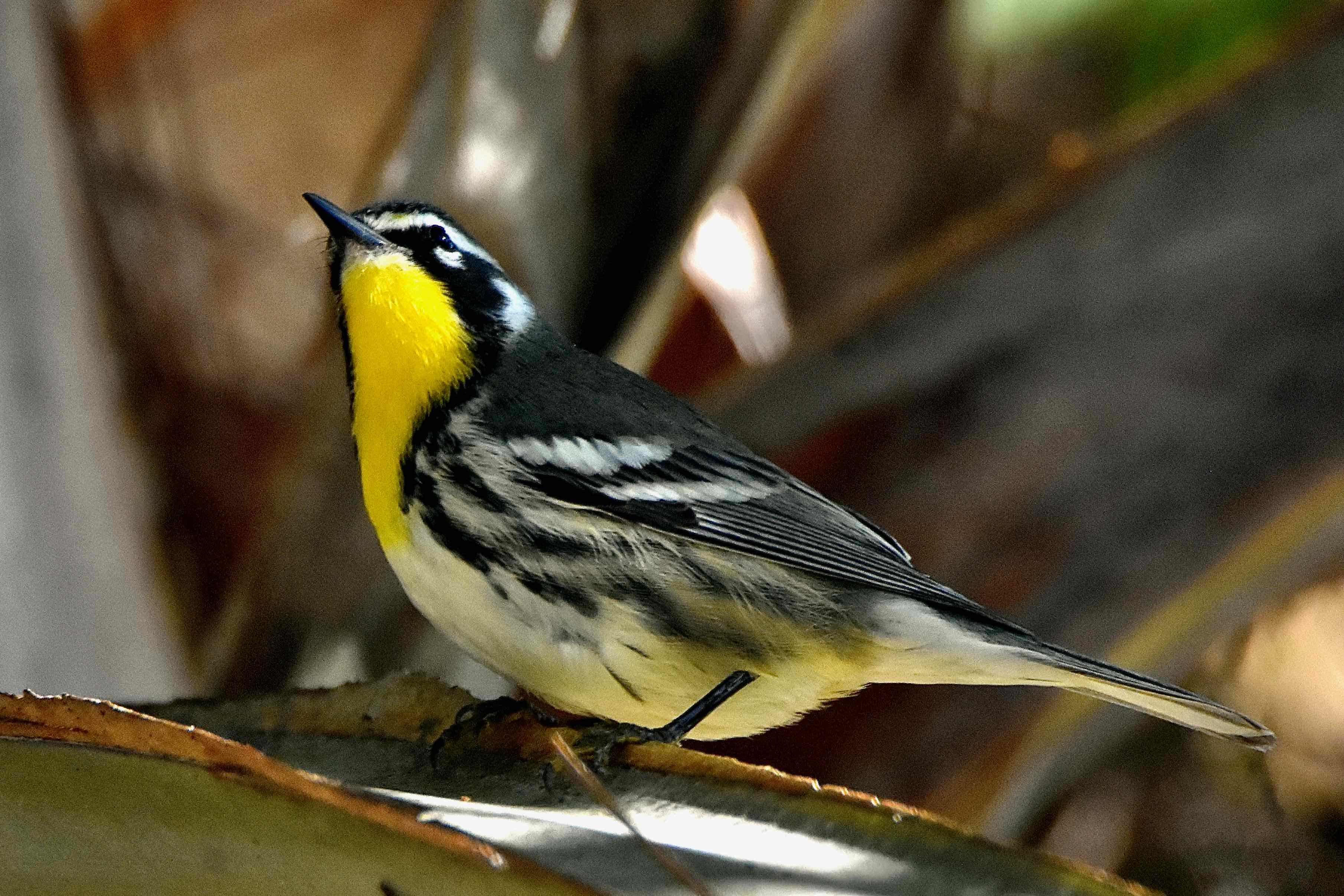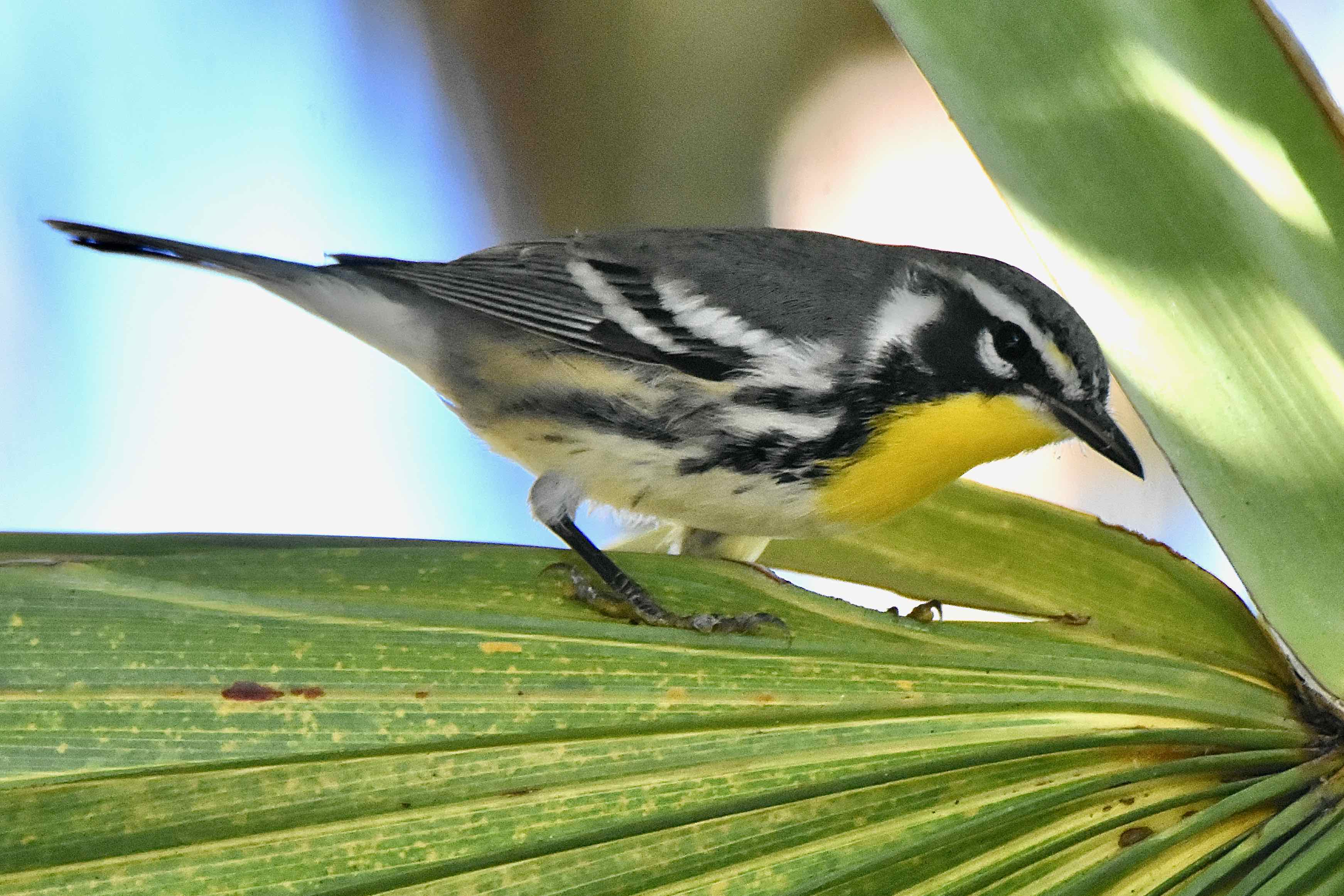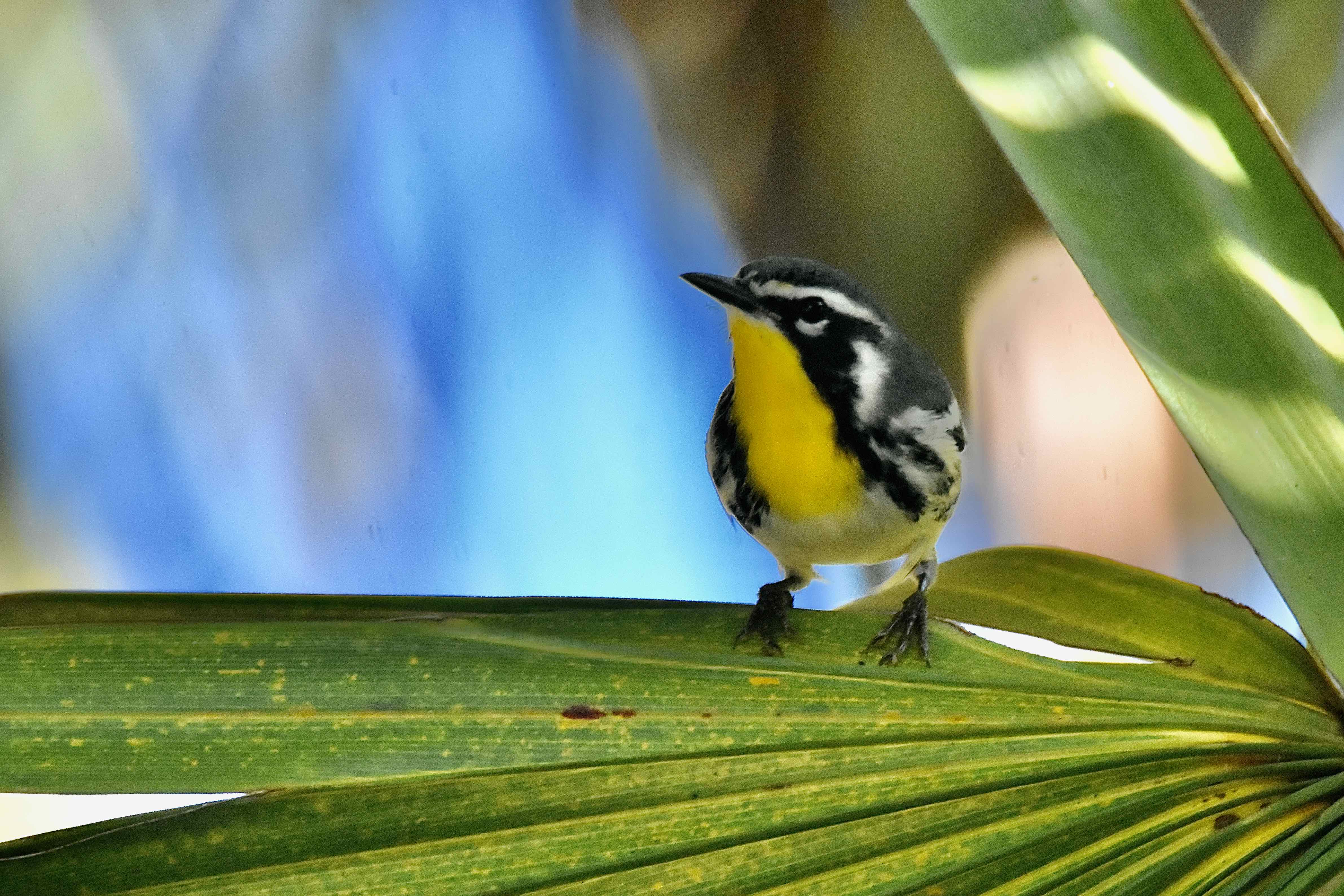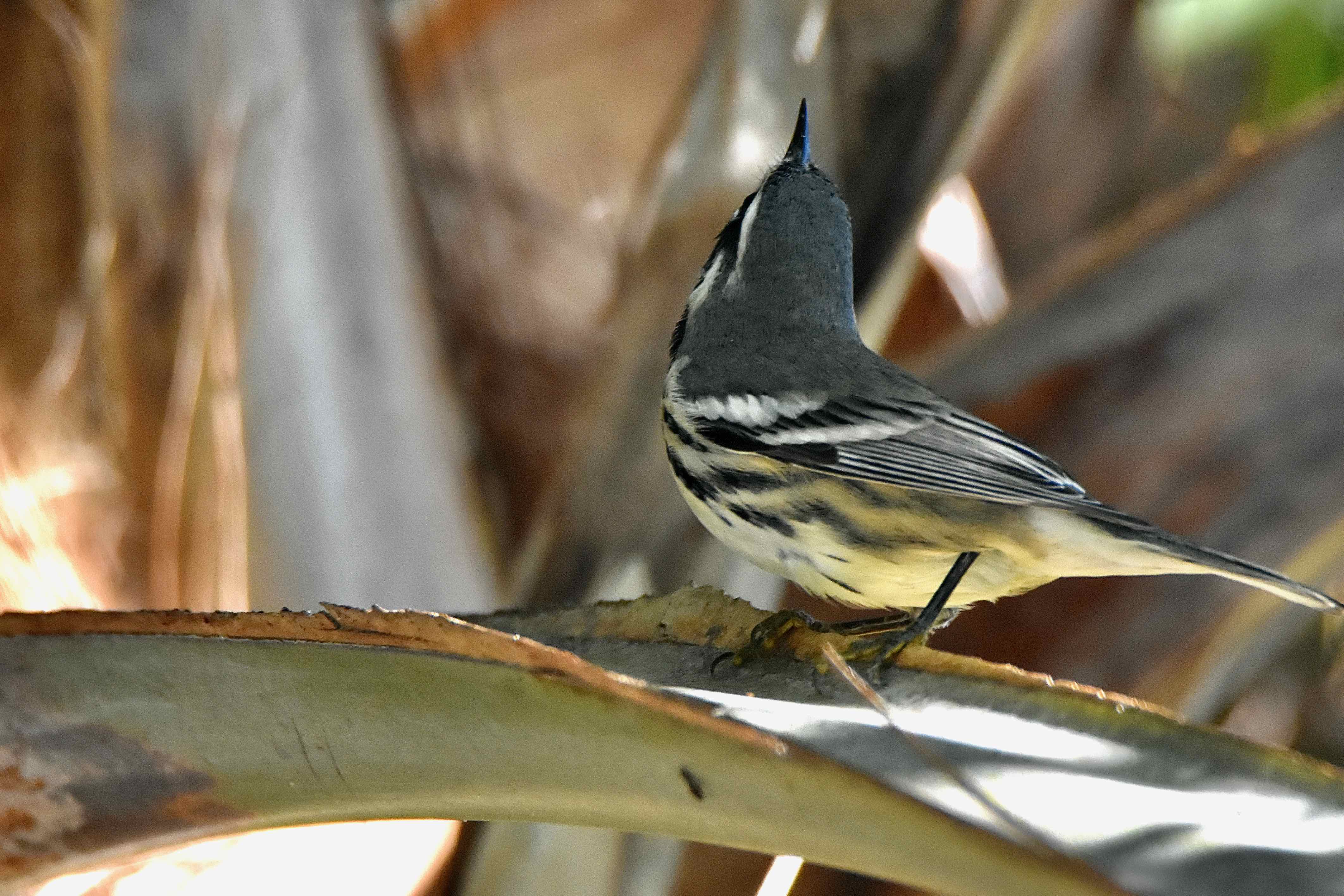
Yellow-throated warbler, photographed at Lake Ida Park, Delray Beach, Palm Beach County, in November 2023.
Of the many warblers that inhabit the wilds of South Florida, few are as vibrantly plumed as the yellow-throated warbler, Setophaga dominca. It just stands out with its mix of bright yellow and sharp blacks, grays and whites.
Yellow-throated warblers are winter visitors to South Florida, while year-round populations can be found in the Panhandle and in the north-central part of the Sunshine State. Year-round population are also found in coastal Georgia and South Carolina, while migratory birds are found farther inland and up the Atlantic Seaboard as far north as New Jersey and into eastern Pennsylvania, Texas and up the Mississippi River Valley into Illinois and extreme southern Wisconsin.
Yellow-throated warblers eschew the higher elevations of the Appalachians, however.
Yellow-throated warblers also winter in coastal Mexico, the Caribbean and parts of Central America.
Before we continue, we should note another bird with a similar name found in our neck of the woods, the common yellowthroat warbler. Both have yellow throats, of course, but otherwise the two birds don’t really look like each other, the common yellowthroat sporting a distinctive black facemask. The two birds also hang out in different habitats, the common yellowthroat in marshes, the yellow-throated warbler in woods. With that out of the way, let’s return to our regular programming.
Yellow-throated warblers go between five and five-and-a-half inches long, with a wingspan of about eight inches. The throats are bright yellow with a black triangle around and below the eyes. They have a white band above the eye. The belly is grayish white, the back charcoal gray; the wings are charcoal gray, with two distinctive white bars. The bill is thin and long in relation to the body, perfect for picking off bugs, which are the mainstay of their diet.
Females and juveniles are duller versions of the guys. Similar-looking birds include pine warblers, prairie warblers and Cape May warblers, though the latter has some reddish browns that the yellow-throated warbler lacks.
These birds are denizens of open woods, hanging out in the upper reaches of the canopy. Depending on geography, they’ll take to sycamores, live oaks, cypress and pines; in winter, yellow-throated warblers can be found in palm trees just like the guy on this page.
Yellow-throated warblers will creep about, up and down the trunk and along branches in search of a tasty meal, which could be a beetle, a fly, a caterpillar, a moth or any number of bugs. One early common name for the bird: yellow-throated creepers. They’ll also take insects on the fly.
Florida’s resident yellow-throated warblers are divided into two subspecies, S d stoddardi found in the Panhandle, and S d dominica found in the Peninsula. Only migratory birds are found in South Florida. (Note: some sources we've seen say there are no recognized yellow-throated warbler subspecies, but do divide the population into two groups, the yellow-loreds, found in Alabama and Florida, and the white-loreds, or sycamores. The lore is the space on a bird's face between the eyes and the bill.)
Mapping efforts back in the late '90s and early 2000s found a few yellow-throated warbler nests in South Florida counties, but, according to the Florida Fish and Wildlife Conservation Commission, it’s unclear whether residents built them or straggling migrators did the work instead of flying north.
April is the beginning of nesting season for yellow-throated warblers. Both sexes build the cup-like nests, made of grass, bark, weeds, feathers, caterpillar silk and other material, though females probably do a greater share of the work. Yellow-throated warblers locate their nests high and on the outer edges of the canopy, and sometimes strung in sheets of Spanish moss, where available.
A typical clutch has between three and five eggs, which require 12 or 13 days of incubation. The division of parenting duties is murky; mom handles incubation duties, though dad might pitch; feeding is similar. Dad, meanwhile, does defend the nest through song.
How long it takes for young yellow-throated warblers to fledge isn’t known. (One estimate: seven days.) A pair will have two broods in a season.
Overall, the yellow-throated warbler population is in good shape; experts estimate the population at about two million individuals. They have been steadily expanding their range northward, but habitat loss remains a threat to their security.
Fun fact: The species name, dominica, comes from the island of Hispaniola, where the yellow-throated warbler was first described. Hispaniola is home to the Dominican Republic, hence dominica. Yellow-throated warblers are members of Parulidae, the wood warbler family.
Lake Ida County Park



